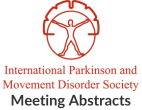Challenges in Wilson disease management in a resource-limited country: a case report from a tertiary center
Objective: To describe a Wilson disease (WD) case report with severe neurological manifestations who was successfully treated with zinc salt monotherapy, due to unavailability of…Mutation of the ATP5F1A gene associated with dystonia, spasticity, myoclonus, cognitive impairment and epilepsy – a rare case report of a patient
Objective: We present a patient with generalized dystonia with spasticity, craniofacial dysmorphism and myoclonus on the left upper limb due to mutation of the ATP5F1A…A 24-year-old female with 18p deletion syndrome presenting with rapidly worsening dystonia
Objective: To describe a case of rapidly worsening dystonia in 18p deletion syndrome. Background: 18p deletion syndrome resulting from deletion of the short arm of…Unraveling the Complexity of Neurodegenerative Disorders: A Case Report of PKAN Suspected in a 24-Year-Old Patient with Severe Dystonia
Objective: To present a case study of a 24-year-old patient with severe dystonia and cognitive decline, suspected to have Pantothenate Kinase-Associated Neurodegeneration (PKAN), a rare subtype…The Spectrum of Presenting Phenotypes in Childhood Onset Huntingtons Disease
Objective: Childhood-onset Huntington’s disease (HD) is a rare subset of HD with symptom-onset before the age of 18 years. We here detail the presenting movement…Startle Reflex in CTNNB1 Mutations: A diagnostic Clue
Objective: To describe two patients with CTNNB1 mutation with a startle reflex, an underrecognised clinical sign. Background: CTNNB1 mutations is an increasingly recognised cause of…Spastic paraparesis and paroxysmal dystonia associated with a novel mutation in ATP1A3 in a spanish family
Objective: To describe a new phenotype related to a novel mutation in ATP1A3 in two women from the same family Background: Mutations in ATP1A3 have…Tetradystonics patients may be misdiagnosed?
Objective: Present a case of movement disorder that genetic panel hasn’t tracked in the screening, and it’s stabilization with L-carnitine. Background: isobutyryl-CoA dehydrogenase deficiency is…Deep brain stimulation of globus pallidus internus for monogenic dystonia
Objective: We aimed to evaluate the efficacy of GPi-DBS in patients with monogenic autosomal dominant dystonia associated with mutations in TOR1A(DYT1), THAP(DYT6),and KMT2B (DYT28) genes.…ATP8A2 Mutation in a Tunisian Family : Expanding The Clinical Spectrum
Objective: Our aim was to report the clinical and paraclinical findings from two siblings who presented with a new phenotype of ATP8A2 gene mutation. Background:…
- « Previous Page
- 1
- 2
- 3
- 4
- 5
- …
- 26
- Next Page »
